We just came back from our camping trip and it was great. It was nice to get away, disengage from the daily habits and routines. We had rain for the first few days but the rest of the time was very nice. The provincial park where we camped is located on shores of Lake Huron. There are few little towns nearby, perfect for day trips. That saved the day during those few rainy days so, we used the time to check out some local attractions including a small artisan cheese manufacturer. They have a variety of exotic cheeses made with anything from beer to various herbs. We really liked their goat cheese and cheddar with basil, so we got some to enjoy with our breakfast.

Breakfast is my favorite meal on camping trips. I love to crawl out from the tent in early morning with the first birds chirping. Naturally at that point I am looking forward to some rugged outdoorsy breakfast made on small gas stove. It is pretty standard for us and usually comes to: toasted bread, scrambled eggs, almond butter, our homemade jam and coffee. All the simple stuff became a staple breakfast on all of our camping trips. To add to our joy of breakfast, this time we were lucky enough to have access to a small farm bakery, located just down the road from the campsite. The place is open only on Fridays and not to be last, we were at the gate 9:00 am sharp. As you walk in an aroma awakens your appetite. A big traditional brick oven radiates the heat and shelves are filled with European style rye breads, sourdoughs, buns, rolls and all kinds of sweet pastries. If this doesn’t wake you up I don’t know what would!
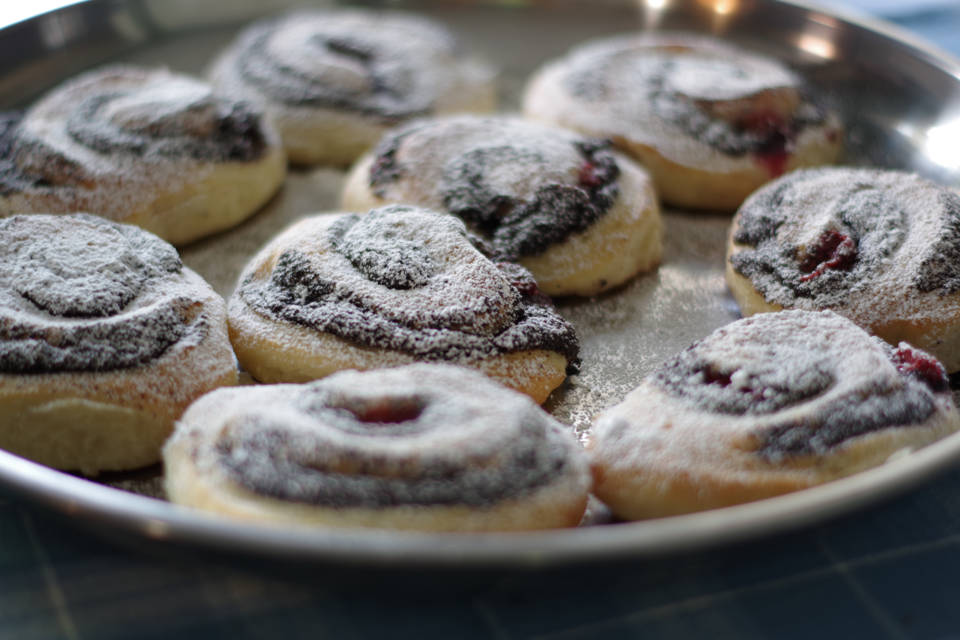
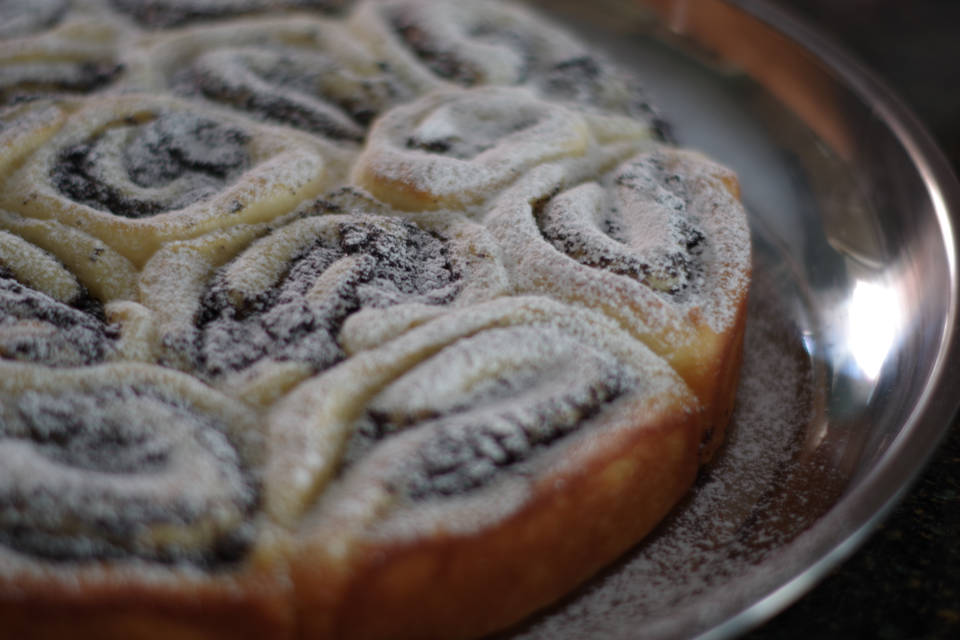
We bought 10 salty and sweet pastries, for what I would say was a good deal, for $20. It smelled so good it was hard to resist waiting to get back to the camp to test it all. What I liked the most was a strudel roll type pastry. There were two kinds, one with poppy seeds and sour cherries and the another one with custard.
As soon as we returned from the trip, I embarked upon the task to make one myself. The first was a poppy seed roll. I liked it so much that I made two versions in two consecutive days. The first version is with the poppy seed filling alone and the another one with added sour cherries. Both were amazing!
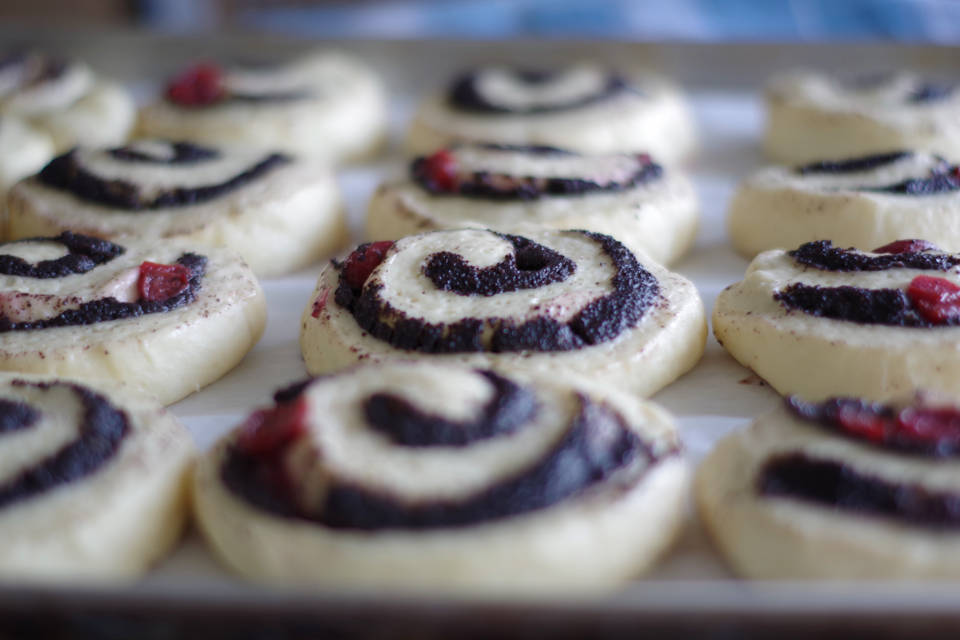
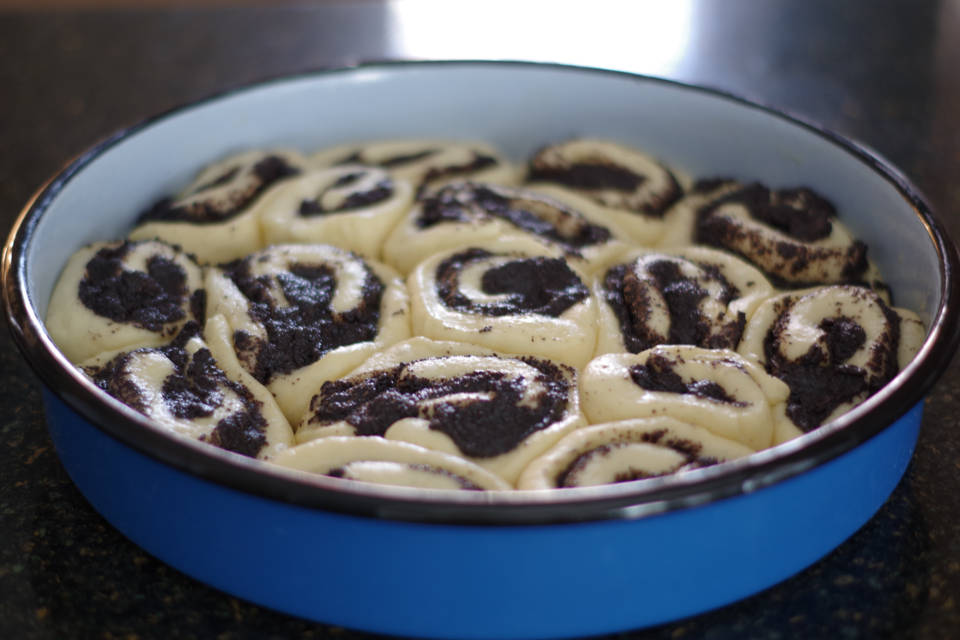
The version with the poppy seed filling alone, I baked in a round pan with rolls nested tightly. After the last dough rise, they looked very much like cinnamon rolls. The dough was cottony soft and the filling was one of the best I have tasted. It was smooth with a mild nutty flavor and the right balance of sweet and sourness with a discrete Rum aroma.
The second version, with added sour cherries, I baked in a large sheet pan allowing lots of room in between the rolls for rising. During baking, a larger pastry area was exposed to direct heat which made it dryer and gave it a bit of a crispy skin. The inside was still soft and sour cherries gave it a little unexpected “kick”.
It is a matter of taste which version you like better.
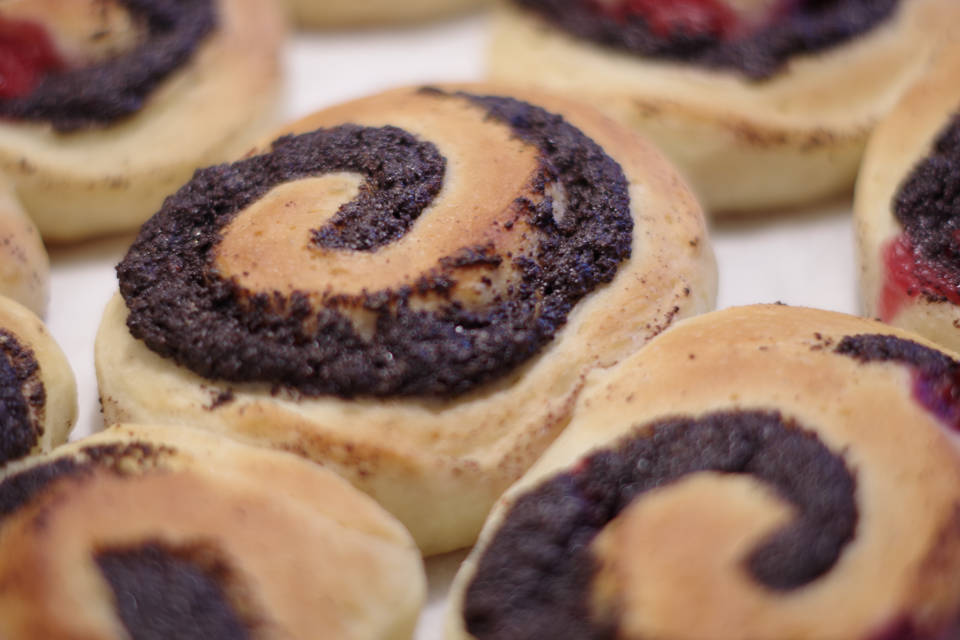
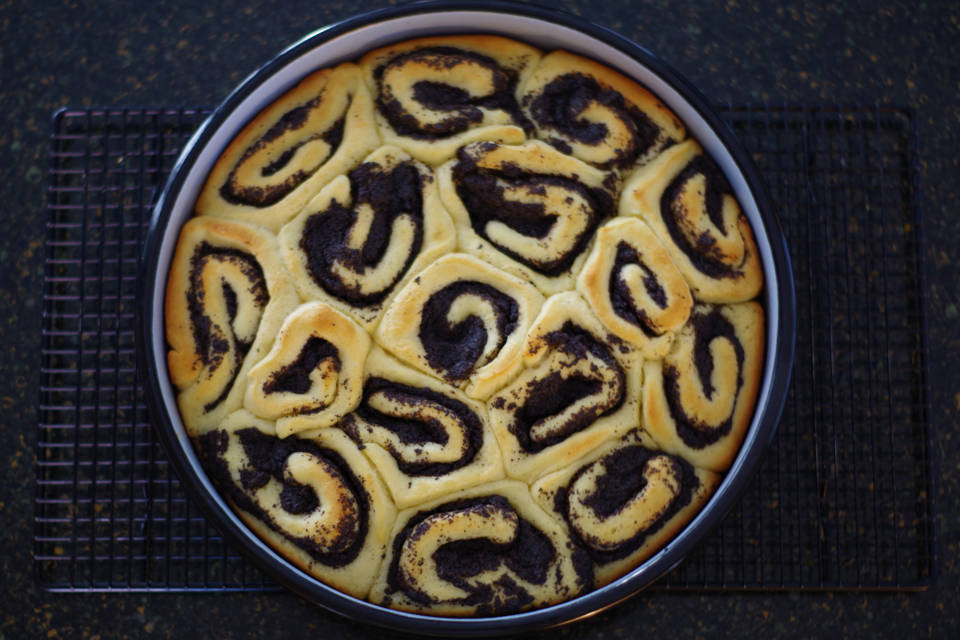
As usual, I made the dough by hand, although it can be made in a bread maker or by using a standing mixer. I enjoy direct contact with the dough and it takes only about 8 minutes of kneading to develop a satisfactory gluten structure. To make sure the gluten has fully developed, just stretch the dough gently between your hands. If it stretches pretty thin and creates a windowpane without breaking, you are done.
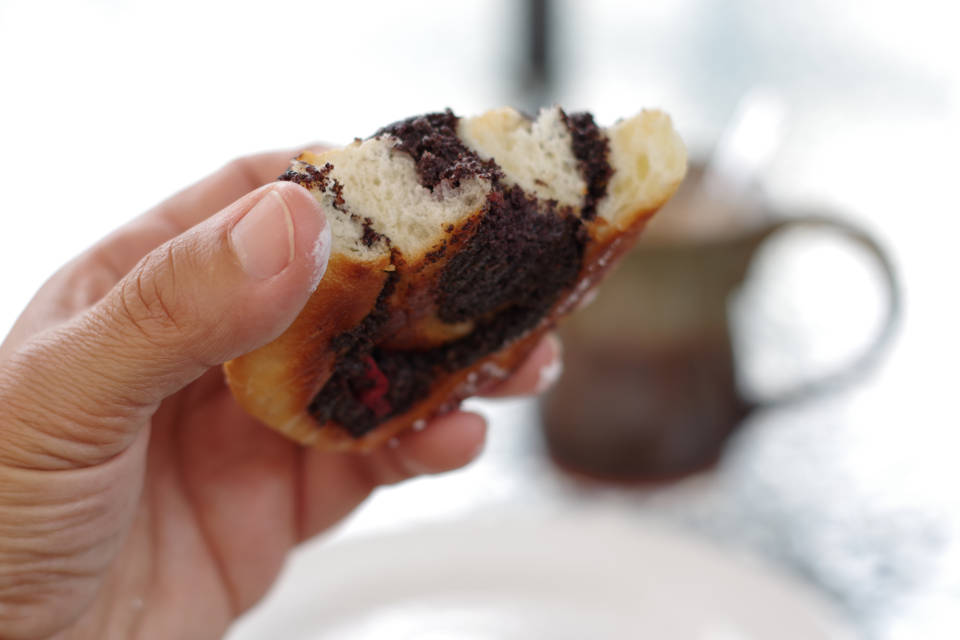
Make sure the poppy seeds are not gone rancid. They have a high oil content which makes them susceptible to rancidity. After opening the bag taste a small spoonful of the seeds and see if they have an unpleasant, tangy, biting taste. If so, throw them away. Always keep the poppy seeds in an air tight container in the freezer to extend their shelf life. Grind the poppy seeds in a rotary coffee grinder just before making a filling. Grind the seeds in 1/4 cup batches about 30 seconds until they begin to clump together.
You will notice that in the dough making process, I used Tangzhong Roux. It is a Japanese technique that is a popular bread enhancer in Asian countries. The purpose of it is to make the baked pastry lighter and more tender. Roux helps to retain the moisture in the dough during baking. Don’t get intimidated if you have not heard of it before. It is just a mix of water and flour that is gelatinized after brief cooking over medium heat.
Generally you can use Tangzhong Roux with any kind of yeast dough recipe to achieve the same benefits. Simply take approximately 5% of recipe flour by weight and mix with the water in a ratio of 1 part flour to 5 parts water by weight. For example in this pastry recipe total flour weight is 340 g. Five percent of that is 17 g and I rounded it up to 20 g. Five times that by weight is 100 g which is equivalent to 100 ml water. Remember that both ingredient amounts are taken from the original recipe ingredients, they are not extra to the recipe.
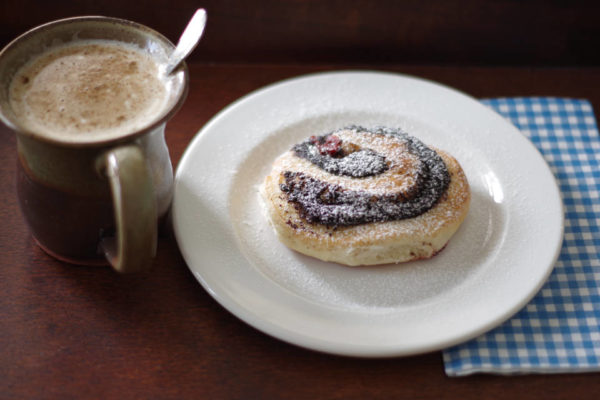
| Prep Time | 60 minutes |
| Cook Time | 20 minutes |
| Passive Time | 150 minutes |
| Servings |
servings
|
- 43 g unsalted butter cold
- 50 g granulated sugar
- 1/2 tsp sea salt fine
- 1 egg
- 125 ml milk
- 320 g all purpose non bleached flour
- 2 tsp dry yeast
- 1 Tangzhong Roux recipe prepared and cooled to room temperature
- 20 g all purpose non bleached flour
- 100 ml water
- 200 g poppy seeds ground
- 125 ml milk
- 55 g unsalted butter
- 106 g granulated sugar
- 1/2 tsp pure vanilla extract
- 1 tbsp golden Rum
- 1 1/2 tbsp lemon juice
- 1 lemon zest from a whole lemon
- 1/4 tsp ground cinnamon
- 1/4 tsp sea salt fine
- 100-150 g sour cherries (optional)
Ingredients
Dough
Tangzhong Roux
Poppy Seed Filling
|

|
- Mix together flour and water in small sauce pan. Over medium heat, whisk until you get a smooth, translucent, pudding like appearance. Remove from heat and let cool.
- Grind the poppy seeds in batches of about 1/4 cup using blade coffee grinder.
- Add the poppy seeds to a medium size saucepan, together with the rest of the filling ingredients. Cook over medium heat for about 5-10 minutes until a paste like texture is formed. Initially the mix will become watery after the butter melts but will thicken up after the poppy seeds absorb some of the moisture. Remove from heat and let cool to room temperature.
- Mix the milk, tangzhong, sugar, salt and egg in a small bowl. Whisk until they are fully incorporated.
- Mix the flour and yeast in a large bowl.
- Cut the butter into small 13 mm (1/2") cubes and add to the flour mix. Toss to make them fully coated. Using your fingers rub the butter into the flour mixture until you get a coarse sand like appearance.
- Add liquid mixture to the flour and mix until fully incorporated. Knead on a lightly dusted work surface for about 8-10 minutes until gluten is developed. Double check if you can make a windowpane with the worked dough.
- Put the dough in a bowl, cover and let rise in a warm place for about 45 minutes.
- Punch the dough down on a lightly floured surface, put it back into the bowl, cover and let rise for another 45 minutes.
- Roll the dough out to 305 mm x 457 mm (12" x 18") rectangle on a lightly floured surface.
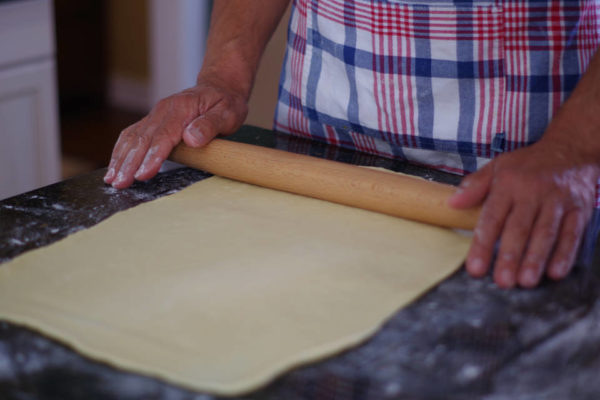
- Melt a little butter (20-30 g) and brush the rectangle, keeping away 25 mm (1") from the perimeter edge.
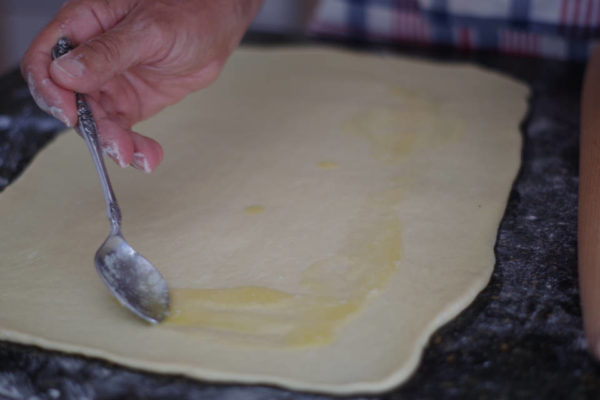
- Spread the poppy seeds over the buttered area as evenly as possible.
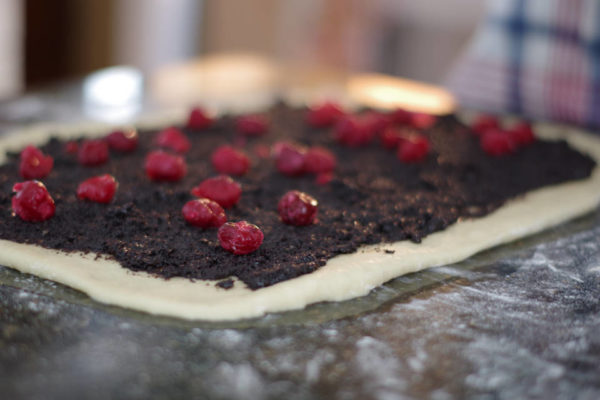
- Roll the long edge up. If the dough sticks to the base, use a dough scraper to help separate. After the dough is fully rolled, pinch the edge to seal it.
- Cut the roll in half with serrated knife. Cut each half in 8 even pieces. Place the rolls into two buttered 230 mm (9") baking pans or as I did, in one 300 mm (12") pan. Optionally, you can put them all on one large rectangular baking pan lined with the parchment paper. Cover with plastic film and let rise for 60 minutes.
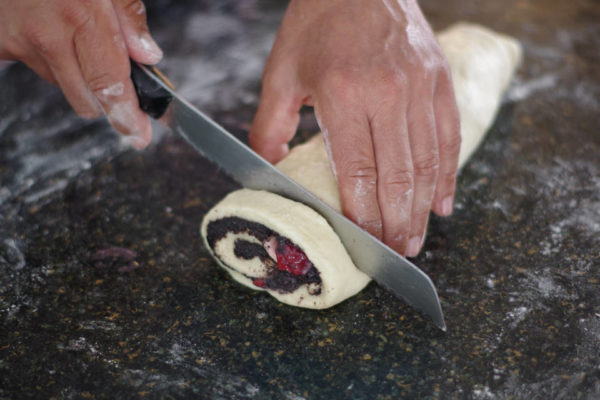
- Preheat the oven to 175 °C (350 °F). Bake the rolls for about 20 minutes.
- Let cool and dust with powdered sugar before serving.

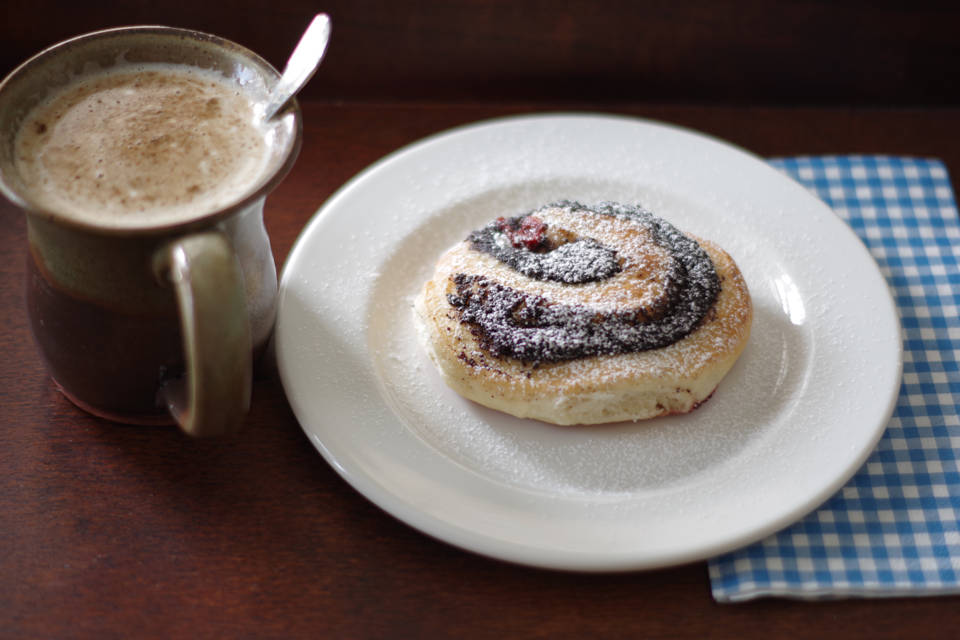
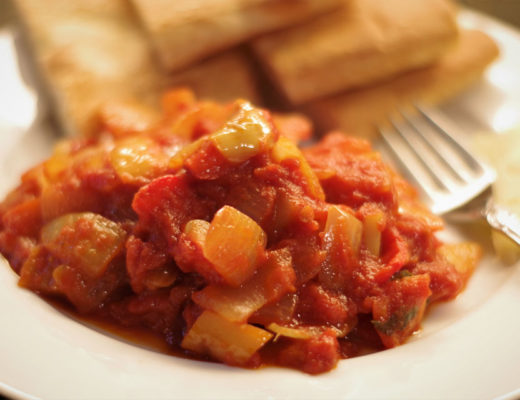
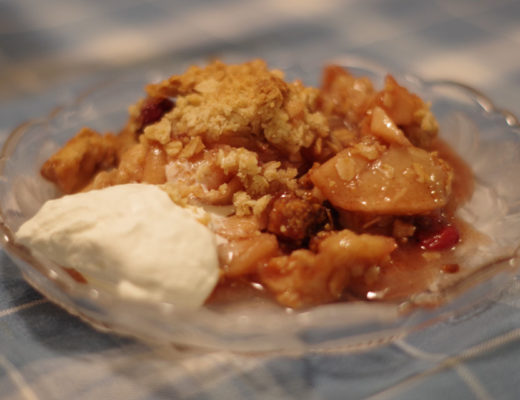

No Comments